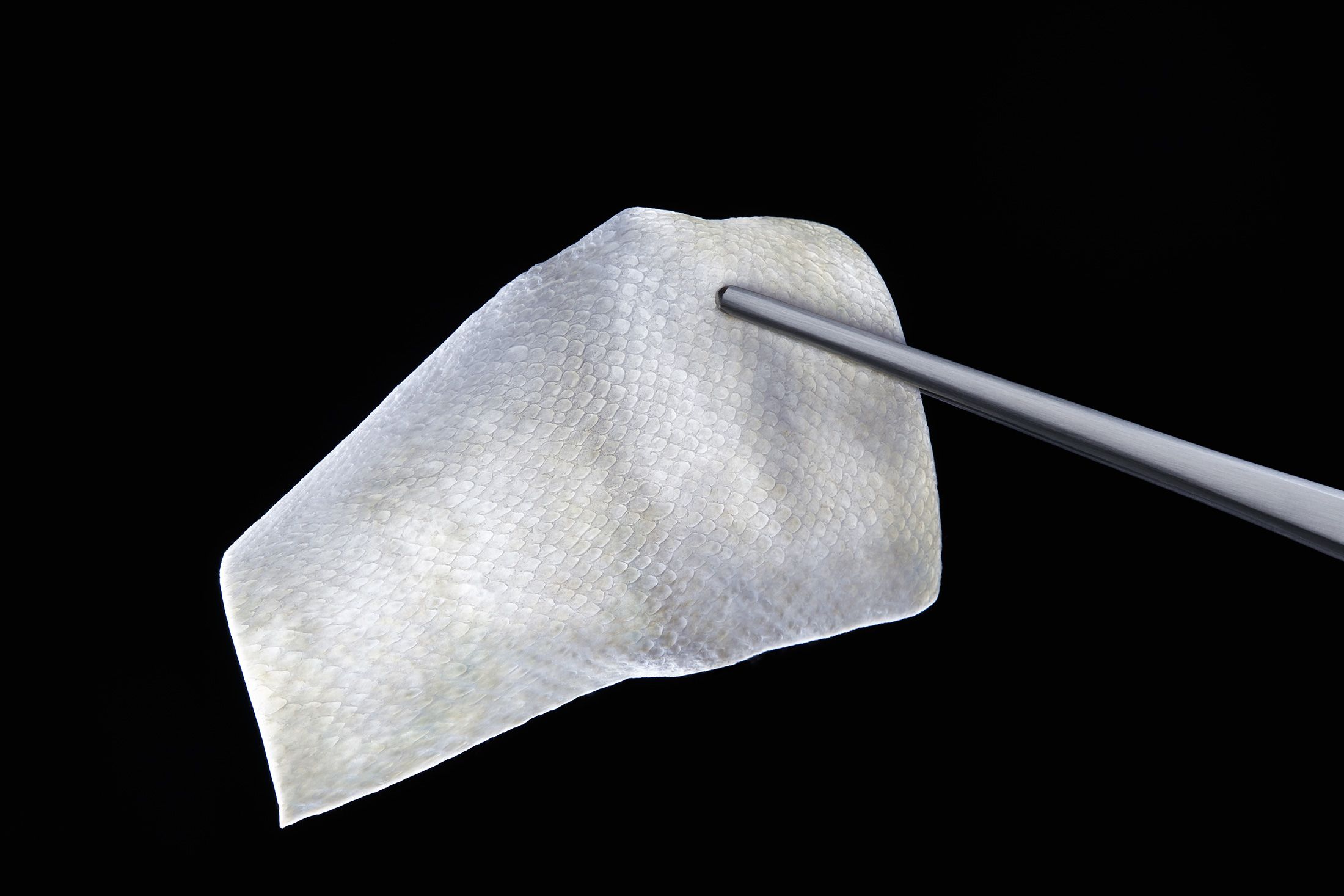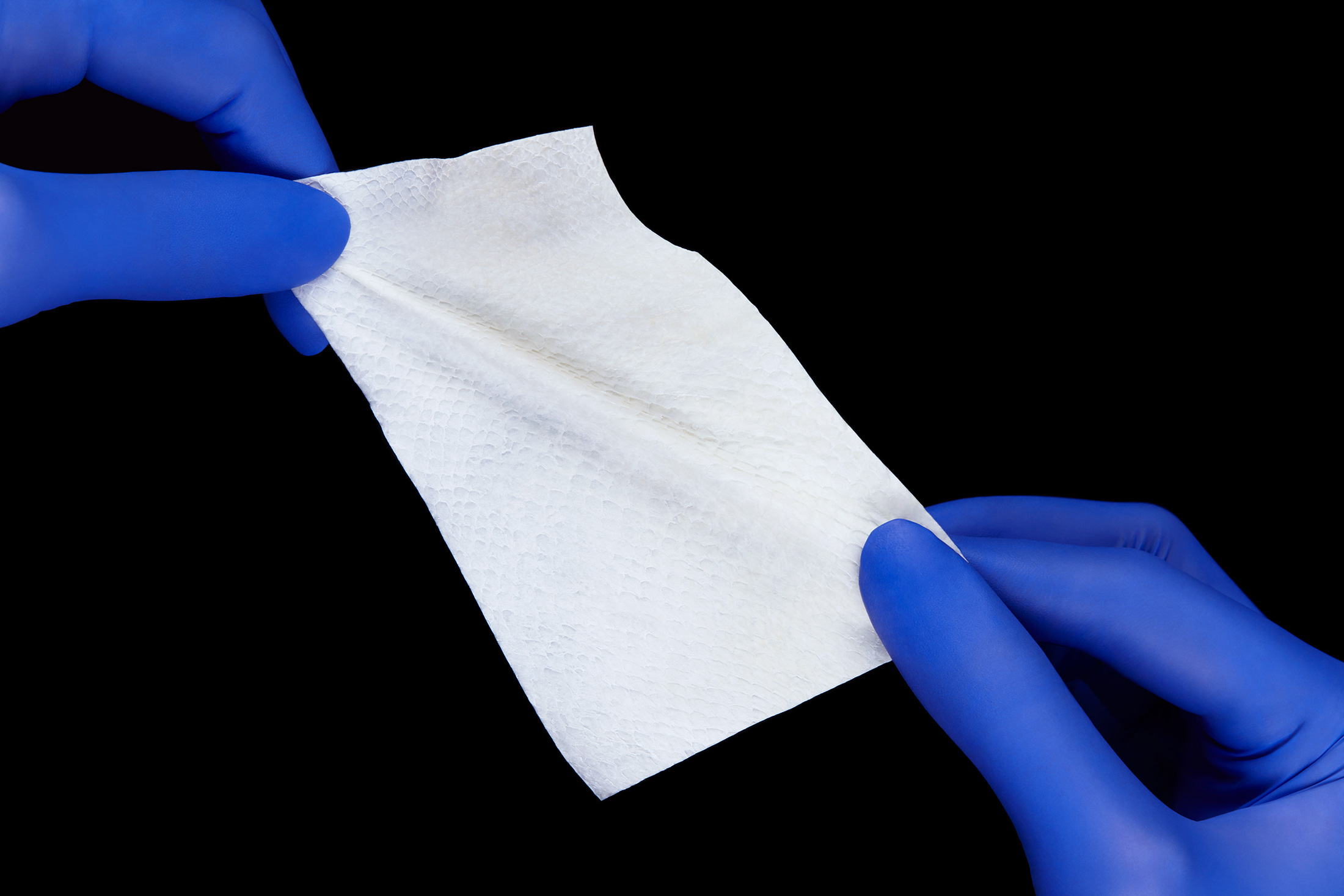Iceland’s Pioneering Fish Skin Treatment For Human Wounds
Text by Sonia Nicolson
These FDA-approved skin substitute reduces a patients inflammation and can transform chronic wounds into acute injuries using a simple solution; fish skins.
Amputations can be the result of trauma or an aggressive disease but a lot are caused by injuries that fail to heal; chronic wounds. This can be the result of the patient having diabetes. Diabetes is on the rise with 1 in 11 Americans suffering, and this is set to rise to 1:4 by 2050. Iceland has an exceedingly low rate of diabetes for a developed country. Genetic factors, and a higher percentage of A2 milk consumption (A2 beta-casein is the dominant form of casein protein found in a cows milk) are possible explanations for this low rate. Diabetes is when a person has high blood sugar levels and this can cause nerve damage and poor circulation meaning the body finds it harder to heal wounds. If wounds become infected, this can lead to amputation.
Current Treatment For Wounds
Wounds are currently treated with skin from animals; pigs (or human cadaver, corpuses) but both can risk infections or transfer of other diseases.
“I was interested in finding a source of material that is as similar to human skin as possible and the surprising thing is that cod fish skin is much more similar to human skin than for example pig skin” said Fertram Sigurjonsson, Chemist and CEO, Founder of Kerecis Ltd.
Gone Fishing
Iceland has worked with fish leather for a long time. “My grandfather’s first shoes were the skin of a catfish,” Sigurjonsson says, and instead of kilometers, Icelanders used old worn out fish shoes to mark distance.
“My first memories are of fish,” Sigurjonsson says, poking at a machine he designed to help dry out the skin. Like many men here in Iceland he spent his summers working in processing plants, cleaning the catch or driving forklifts. After graduating from the Technical University of Denmark with a Degree in Innovation and Product Management, he started working at prosthetics maker Ossur, where he saw many amputee patients with replacement limbs developing chronic wounds. An impromptu move to New Zealand where he was running business development for Keratech, who dressed wounds with sheep wool, got him thinking about substitute natural materials. When he returned to Iceland, he started researching the idea of using fish skins in wound dressing.
Fertram Sigurjonsson has spent his career treating chronic wounds and is turning cod skins into medical products. The Kerecis Ltd manufacturing facility, located in the fishing town of Isafjord which is 30 miles from the polar circle, mainly fishes for cod. Using a 583-ton trawler on a 3 day fishing trip as an example “If you take all the skins from that trawler…we would be able to treat one in five wounds in the world.” says Fertram Sigurjonsson
Today, trucks haul the fish to a commercial processing facility in Isafjordur. The fish land on a conveyor belt, where they get filleted and skinned. The meat is sold as food and, twice a week, Kerecis employees come to collect skins of the right size, age, and species.

Photo by Rebecca Scheinberg
Descaling And Cleansing
The cod is taken to a processing plant where Kerecis collect the skins and examine them for flaws such as holes, tears, traces of blood and parasites. When the best fish skins are collected, the team start the process of transforming them into medical grafts.
The first step is to remove the scales from the material. The skins are then put into a solution which gently removes cells. “You need to get the mucus away, but we didn’t want to use harsh chemicals or wash away the fats or elastin,” Sigurjonsson says, referring to the protein that makes skin flexible. The clean skins are then moved into a decontaminated room where a dehydrator begins the two day process of dehydrating them, whilst preserving the important 3D structural built up of the material. This structural build up is vital to the healing process. The skin is then cut into squares and sterilised for use in bandaging.
Testing The Skins
Dr John Lantis, the Chief of Vascular and Endovascular surgery, and a Kerecis adviser, has been using Kerecis products at the Mount Sinai Hospital in New York on his patients.
The cell structure of these Kerecis fish skins recruit the patents bodies own cells to form healthy tissue. The fish skin acts as a structure around which healthy cells can grow and gradually incorporate into the closing wound. It is not known why fish skin works so well but when comparing the use pig skin verses fish skin, the fish skin grafts close the patents wounds significantly faster.
The materials in fish skin yield natural anti-inflammatory effects, especially omega-3 fatty acids, that speed up healing. When placed on wounds, the fish grafts work as an extracellular matrix; a group of proteins and starches that plays a crucial role in a patients recovery. In a healthy person, a matrix surrounds cells and binds them to tissue which generated the growth of new epidermis. But this natural structure fails to form in chronic wounds. Much like a garden trellis, the fish skin grafts provide the body’s own cells with a structure to grow around so they can form healthy tissue, gradually becoming incorporated into the closing wound.
In the first three months of 2017, Kerecis sold as much product as they sold in 2016.

Photo by Rebecca Scheinberg
Use In The US Army
Kerecis are having huge growth, with Doctors working on diabetic patients and also the significant investment from the US Military. On the battle field, these fish skin grafts can be applied immediately to a burn wound to serve as a cover and protect the wound, reducing pain and is an antimicrobial.
Icelandic Fish
The fish in the waters surrounding Iceland have given a lot of sustenance and wealth to the Icelanders. Fish skins were once a byproduct, fed to farm animals, but they are now considered to be the most valuable part of the fish, with Kerecis products costing up to a thousand dollars. At that point, Sigurjonsson says, “one gram of fish skin is worth more than a gram of gold.”


